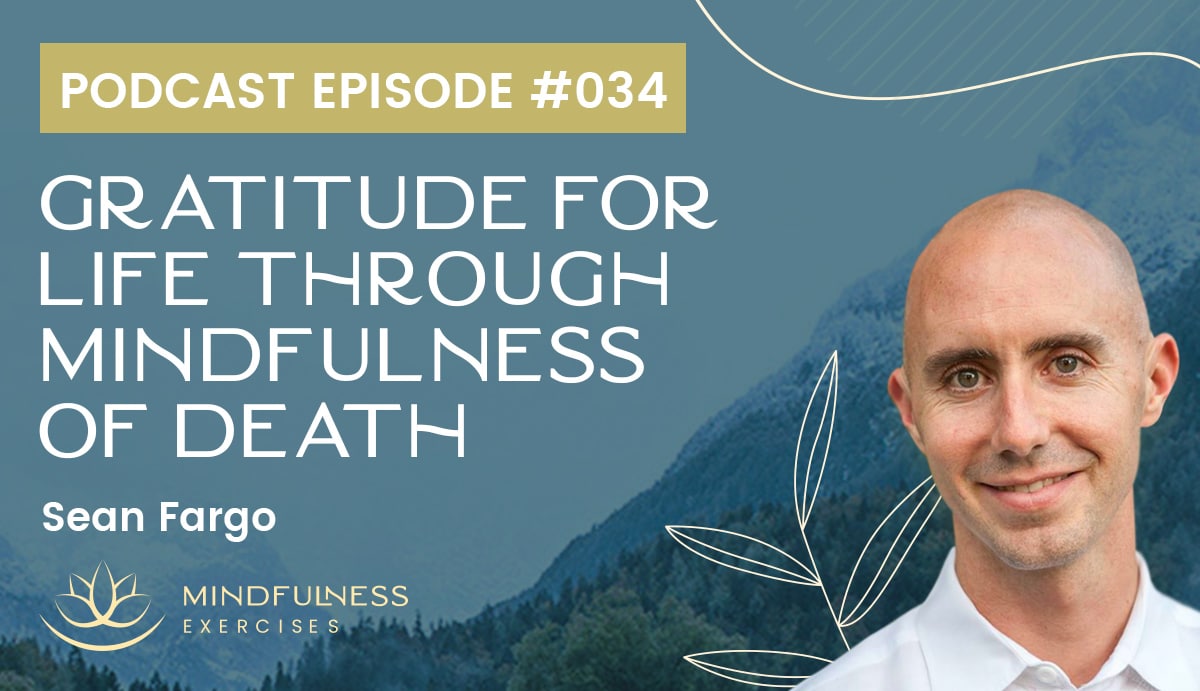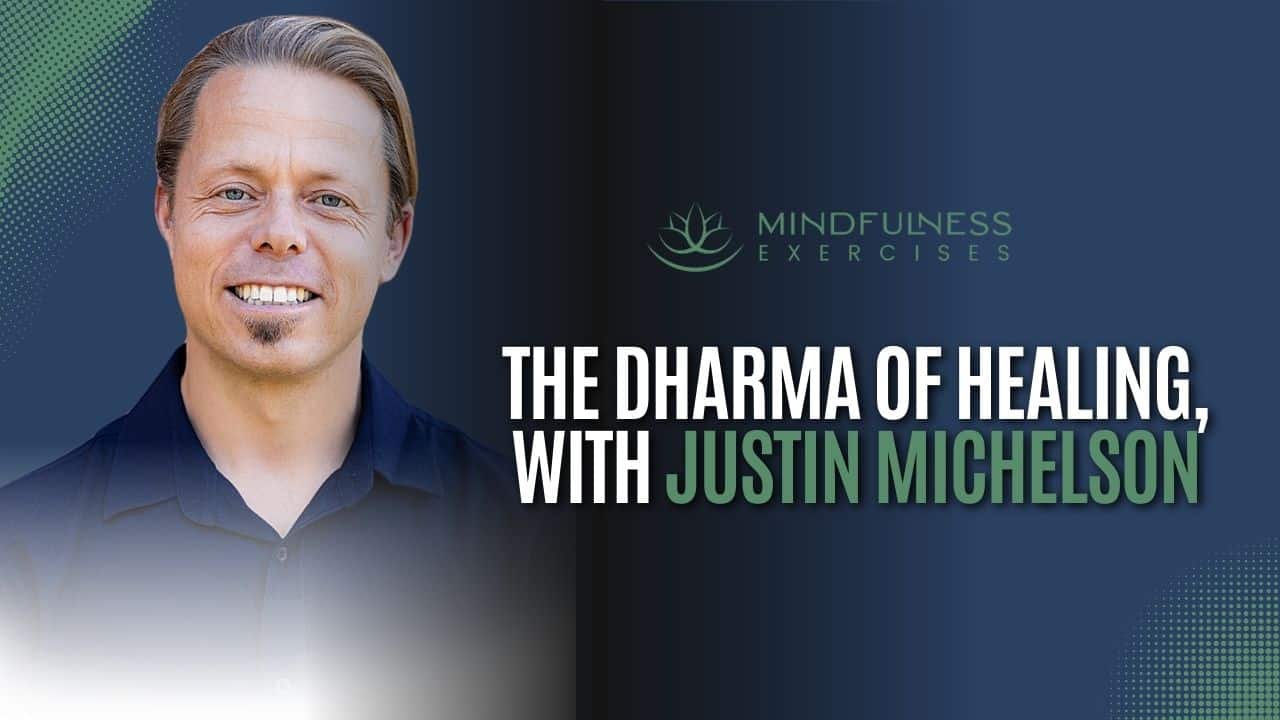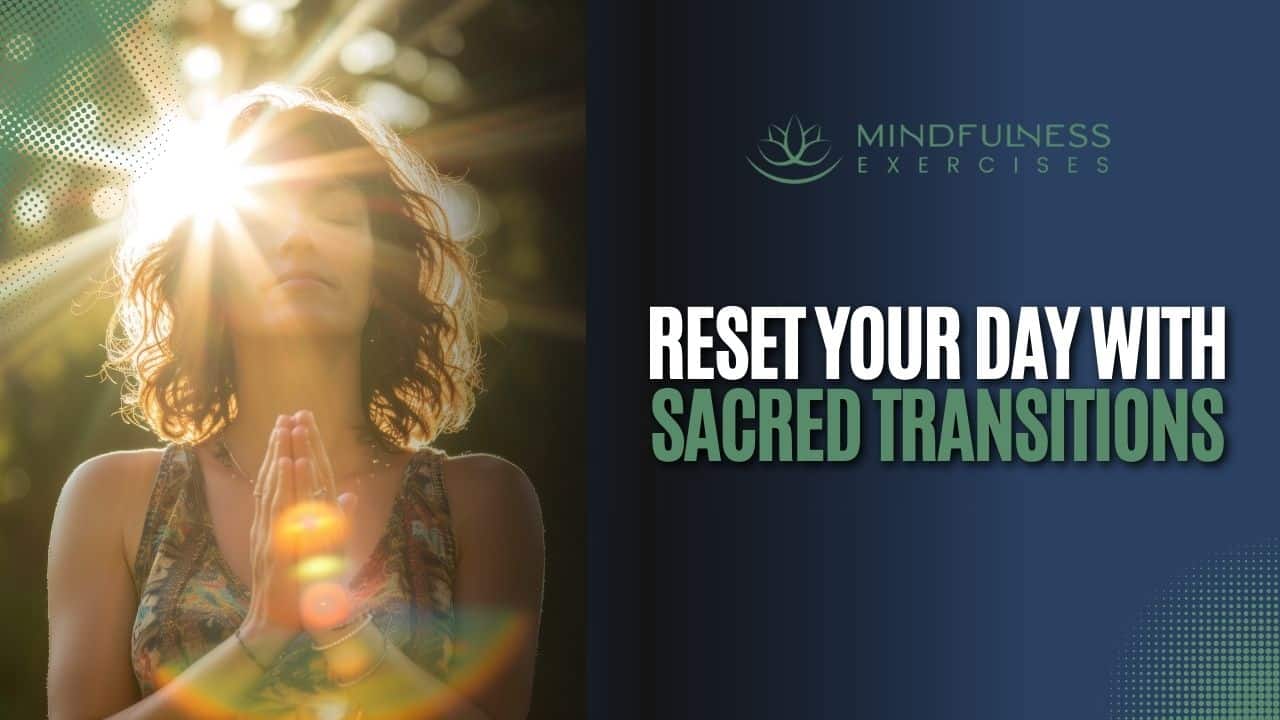Listen now

Being alive is a miraculous gift that most of us take for granted far too often. What would change for us, and how might we live, if we spent just a few minutes every day remembering that each breath could be our last?
In this episode, Mindfulness Exercises founder, Sean Fargo, shares how meditating on the inevitability of loss can illuminate the preciousness of life. He offers practical advice regarding when and how to teach mindfulness of death, and how we might prepare for our own transition. Teachers and practitioners alike will benefit from the reminder that each and every breath is worthy of our gratitude and awe.
Please remember that mindfulness practice is not a replacement for therapy. Listen with care and self-compassion and practice within your window of tolerance. If this, or any other episode, triggers overwhelming, uncomfortable feelings, contact your healthcare provider.
Sponsored by our Mindfulness Meditation Teacher Certification Program
MindfulnessExercises.com/Certify
What You’ll Learn in This Episode:
Show Notes:
Why many consider mindfulness of death the most powerful practice there is
When we pause to contemplate the truth that this very breath could be our last, we cease taking each breath for granted and become more mindful of the preciousness within each moment. Remembering that this moment may be all we have left, is among the most effective methods of encouraging mindfulness, gratitude and appreciation.
“This breath is extremely precious and beautiful, and this practice helps wake us up to this truth of uncertainty of when we will transition. It’s simply sensing into this breath right now, just with this knowing of the fact that it could be our last. And it’s not theoretical per se, it’s just true.”
Why mindfulness of death is often considered an advanced practice
Although it’s unavoidable that each and every one of us will someday transition, bringing awareness to this truth may provoke discomfort, fear, or anxiety. This is especially true for those of us in cultures where we are mostly sheltered from the aging and death of others. Practicing with love, care and understanding can help us inch our way closer to the truth and become more accepting of our own impermanence.
“For people starting this practice, if there is no anxiety around this, or fear, I would wonder if you’re really paying attention. Because our natural tendency is to not want it, and so it takes practice to open to this truth over time.”
How to ease our way into mindfulness of death practice
Part of the practice is to notice the anxiety or fear that arises when contemplating this breath as possibly our last. These feelings, too, are something we can hold lightly, with gentleness and care. For many people, easing our way into the practice means staying within our window of tolerance, and working with our reactivity as we do so.
“Some people will start with, say, one year’s worth of breath, and see what comes up and being with that and working with that, and softening judgments around it. And then one month’s worth of breath, and then one week, and then one day and then moving down to this breath. This inhale.”
How mindfulness of death encourages non-attachment
What would it be like to love all of our human experience, just as it is, without becoming attached? Practices that center around the truth of impermanence invite us to let go, to drop our attachments. For it’s attachment that is the cause of our suffering.
“And that’s really a lot of the point here is to love this with this gentle, caring, spacious awareness, without holding on to it or trying to control it, or without ignoring it. But rather, holding it lightly with care.”
What to consider when teaching mindfulness of death
Some populations may experience more sensitivity or vulnerability to this practice. For example, mindfulness of death can be particularly difficult for new mothers. Mindfulness teachers can help their students work with this reactivity by being well-versed in the practice themselves, and by emphasizing gratitude and its celebratory nature. Each breath is a gift.
“You can pair this practice of mindfulness of death with loving-kindness by sensing into this very breath as possibly my last, but sensing into it with love. You know, it’s not a dry awareness. It's a kind, heartful awareness of this inhale.”
How mindfulness of death can bring urgency to our practice
Sean discusses how practicing mindfulness of death led him to become a monk perhaps earlier in his mindfulness journey than he may have originally planned for. Coming to terms with the fact that we do not know how long we have can motivate us to meditate daily, embrace a consistent mindfulness practice, and take action sooner rather than later.
“There’s nothing where we have to believe in anything or be adept at any certain spiritual tradition, we don’t have to believe in reincarnation or karma or anything like that, it’s just really opening to the truth and accepting that we don’t know how many more inhales we have. And so can we be present for as many of them as we can?”
When and what to practice before our own transition
We can practice death awareness every day, by spending just 5 minutes or more considering the preciousness of the breath, the gift of this day. We might prepare for our last moment and become more at peace with our lives by practicing gratitude and cultivating awareness of life’s most joyful, wholesome and meritorious moments.
“This is a type of meditation today that I would probably do if I felt my time was near, which is really just loving what is. Whether I like it or not, can I love what is? That’s a big part of the essence of presence. Not resisting what is but rather opening to it with a sense of care.”
Additional Resources:

About Sean Fargo
Sean Fargo is a former Buddhist monk and the founder of Mindfulness Exercises. The online platform, which has shared free and premium mindfulness resources with over 3 million people worldwide, has now certified over 500 Mindfulness Teachers.
Sean is the lead instructor for the teacher training program, a unique self-paced approach which invites world-renowned mindfulness teachers to share their insights and experiences. Sean has taught mindfulness and meditation for corporations including Facebook, Google and Tesla and for health and government organizations, prisons and hospitals around the world.



